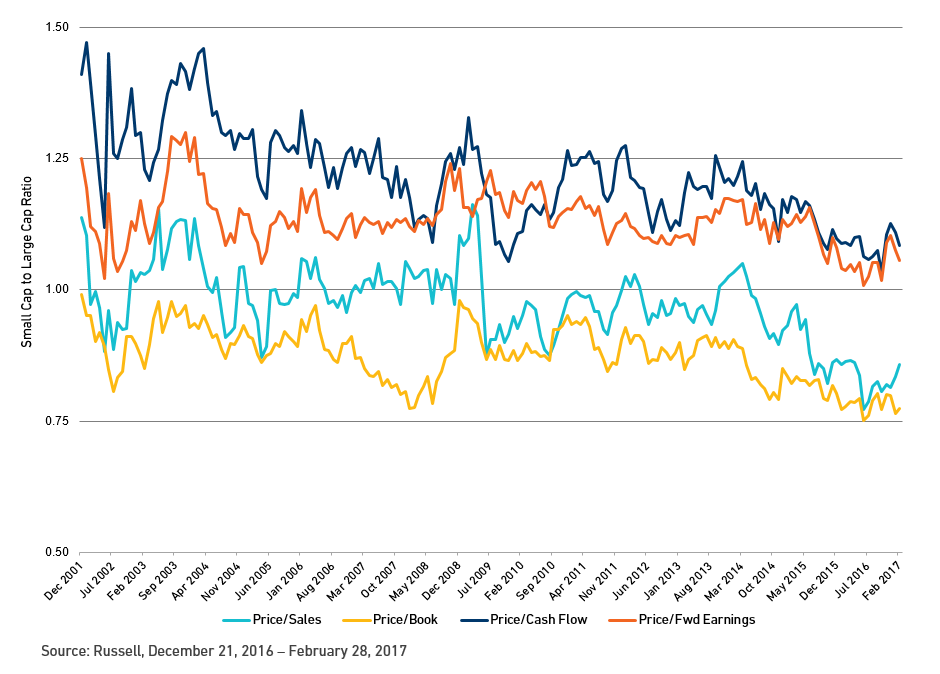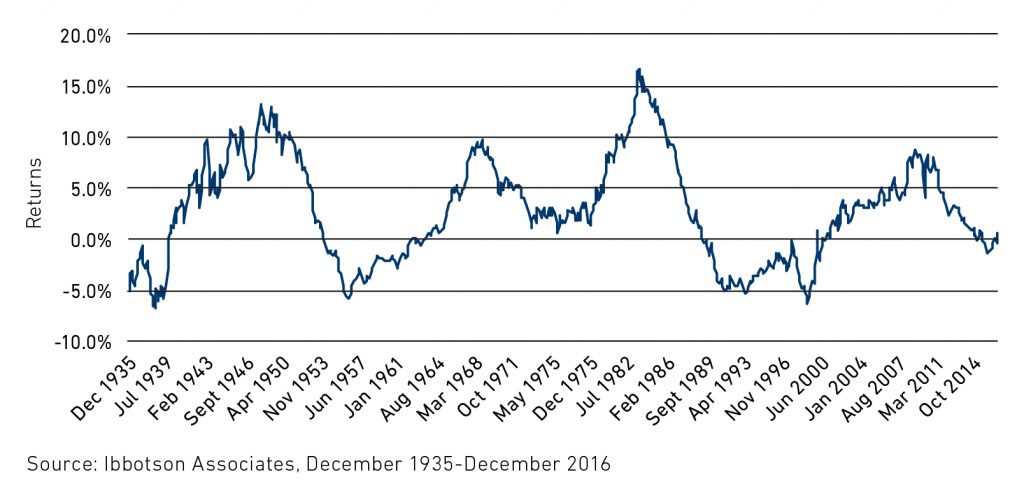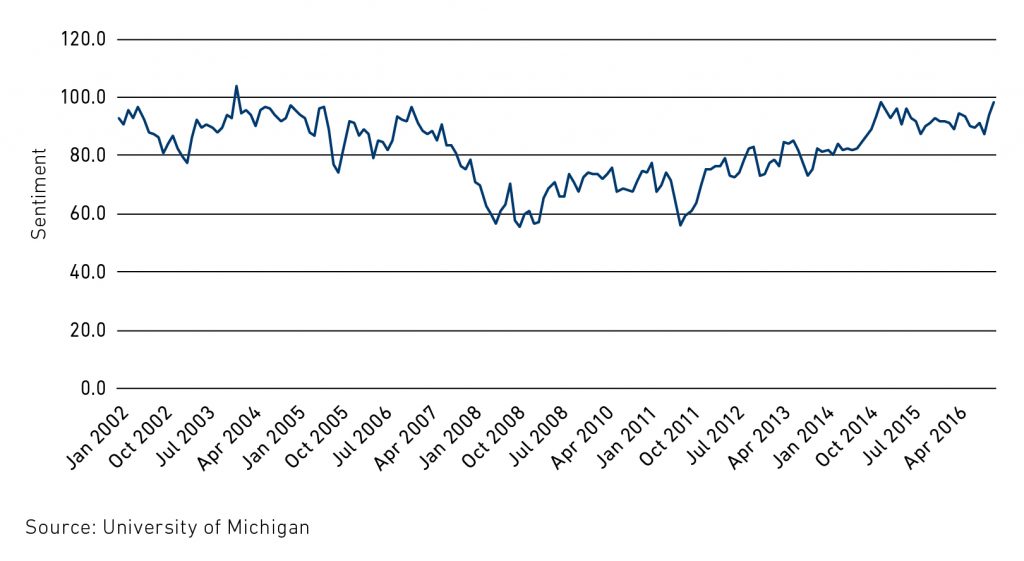Investors are currently faced with a troubling dilemma: U.S. equities are expensive on most measures, but equity exposure continues to be rewarding and the opportunity cost of being left behind is non-trivial. We advocate for an approach that both acknowledges the increasing risk in the equity markets and that simultaneously seeks advantage in relatively cheaper assets.
We believe that due to high absolute valuation levels that some long-only exposure should be migrated to long/short equity strategies, thus protecting against an increasingly likely drawdown scenario. But even after doing so, short of making perilous timing calls, equities will continue to serve as a major allocation in most portfolios. With that in mind, investors need to be dynamic in their approach to allocating within the equity asset class, weighting portfolios toward those assets with relatively attractive valuations and stronger earnings potential.
Markets are in flux with eight years of unprecedented central bank intervention to stave off deflationary forces.
We have been of the belief that the outlook for most asset classes is bleak, with medium to long-term expected returns far below their long-term averages. The explanation for this perspective is widely accepted at this point: 35 years of declining interest rates, higher-than-average valuations, unfriendly demographic trends and low productivity growth. Everything is relative, so the decision comes down to a simple question, which asset class has the advantage? The answer lies within valuation, sentiment and earnings growth, leading us to believe that U.S. small cap could be quite rewarding for investors. Here’s why.
1) Valuation
The valuation of an asset at the time of purchase matters greatly to long-term returns, but is admittedly uncorrelated to short-term performance. Regardless, investors need to add to asset classes when valuations indicate that it is advantageous to do so. Current valuations for small cap companies relative to their large cap peers are about as attractive as they’ve been over the last 15 years, especially based on cash flow and sales. To be fair, small caps aren’t cheap relative to their own history based on trailing 12-month earnings, but then again, much of our (and the market’s) optimism is based on changes that are expected to accelerate earnings.
Relative Valuation: Russell 2000 Index/Russell 1000 Index

Related to valuation levels, over the 10-year period ending December 2016, the payoff to investing in small cap stocks, for which we know there is a long-term premium, has been almost zero. The Russell 1000 Index annualized at 7.08% over this time period, and the Russell 2000 Index annualized at 7.07%. According to Ibbotson’s Stocks, Bonds, Bills and Inflation Yearbook, from December 1925 through December 2016, the premium to small cap stocks has been 189 basis points annualized.
Having a 10-year run when that premium didn’t exist, while not exactly rare, is certainly less common, as can be seen from the following chart. And when that premium begins to expand, failing to have meaningful exposure can be painful, as the payoff is asymmetric (i.e., positive premium period highs far exceed negative premium period lows).
10-year Rolling Small Cap Premium

However, some might be inclined to worry, if rates are expected to rise, won’t that hurt valuations because of the effect on discounted cash flows? We’ve seen this argument many times in recent years, as strategists made the opposite case, that is, that low rates supported higher valuations, but we believe that argument falls flat in both directions, as we explained previously in one of our blog posts:
“…the siren song of the discounted cash flows argument is worth digging into a bit more. Investors put money in equities in part because they are a good inflation hedge over time. Why is that? If inflation is high or increasing, nominal earnings growth will likewise be high or increasing (although that isn’t necessarily true of real earnings growth), and if inflation is low or declining, nominal earnings growth will follow the same pattern. If stock prices follow earnings growth, which is a nominal number, all else equal, valuation levels shouldn’t be affected [as rates change], as both the P (Price) and the E (Earnings) adjust to the changing environment.” (October 5, 2016)
Further, research by JPMorgan, has shown that, “When yields are below 5%, rising rates have historically been associated with rising stock prices.”
All things considered, we believe that the valuation picture for small cap companies is quite supportive of adding to allocations at present. In addition, small cap companies may be poised for a re-rating, because valuation levels are a function of sentiment, and sentiment, as we’ll explore next, is decidedly positive.
2) Sentiment
We’ve seen a growing change in sentiment expressed in a number of ways of late. For one, the post-election jump in consumer sentiment added to an already strong trend that paints consumers as being as optimistic as they’ve been since January 2004. That optimism is a function of the fact that the consumer is in great shape.
Debt service as a percentage of disposable income is near an all-time low going back to 1982. Unemployment is quite low. Average hourly earnings have been increasing at close to their fastest rate since the Great Recession. Housing prices have risen almost 40% since the bottom in 2012. And of course, the stock market has been increasing for the better part of eight years. All of this has contributed to consumers’ euphoria.
University of Michigan Consumer Sentiment Index

Credit spreads have also continued to narrow over the last eight weeks, and are indicative of a risk-on mentality. Historically, small caps have benefited in such an environment.
More specifically, the change in sentiment in favor of small caps is evidenced by the 837 basis point outperformance of the Russell 2000 relative to the Russell 1000 over November and December. We’ll touch on how those changes may impact earnings in the next section, but suffice to say, small caps look to be bigger beneficiaries of the expected changes than their large cap brethren.
3) Sector Exposure Advantage
Lastly with regard to sentiment, investor enthusiasm post-election has been greatest for Financials, Energy and Industrial Stocks, while Staples, Utilities and Technology have all been left behind. With that in mind the small cap asset class has a sector exposure advantage. The Russell 2000 is overweight three of the five best performing sectors and underweight three of the five worst performing sectors since the election.
Sector Weightings

In particular, we like the advantage in Financials, as the steeper yield curve and the reduction in financial services regulation could accelerate earnings at a substantial rate. Industrials and Basic Materials should also do well with an infrastructure and manufacturing push. Offsetting this affection for small caps, however, is reduced exposure to Energy, which is also a sector we believe will do well in the coming year.
Conclusion
We believe that the short to medium term could be quite rewarding for U.S. small cap investors. However, we also acknowledge that attempting to make major tactical changes to portfolios at a time of great hope, but without much in the way of details as to how change will be effected, would be unwise. Likewise, sitting on long-term strategic allocations at a time of unquestionable change strikes us as imprudent.
Investors need to be dynamic in their approach to asset allocation, migrating portfolios towards those assets that are better priced, with improving sentiment, and ultimately, with stronger earnings potential. Based on those metrics, everything is setting up for small caps to be “the” asset class that you need exposure to now.
